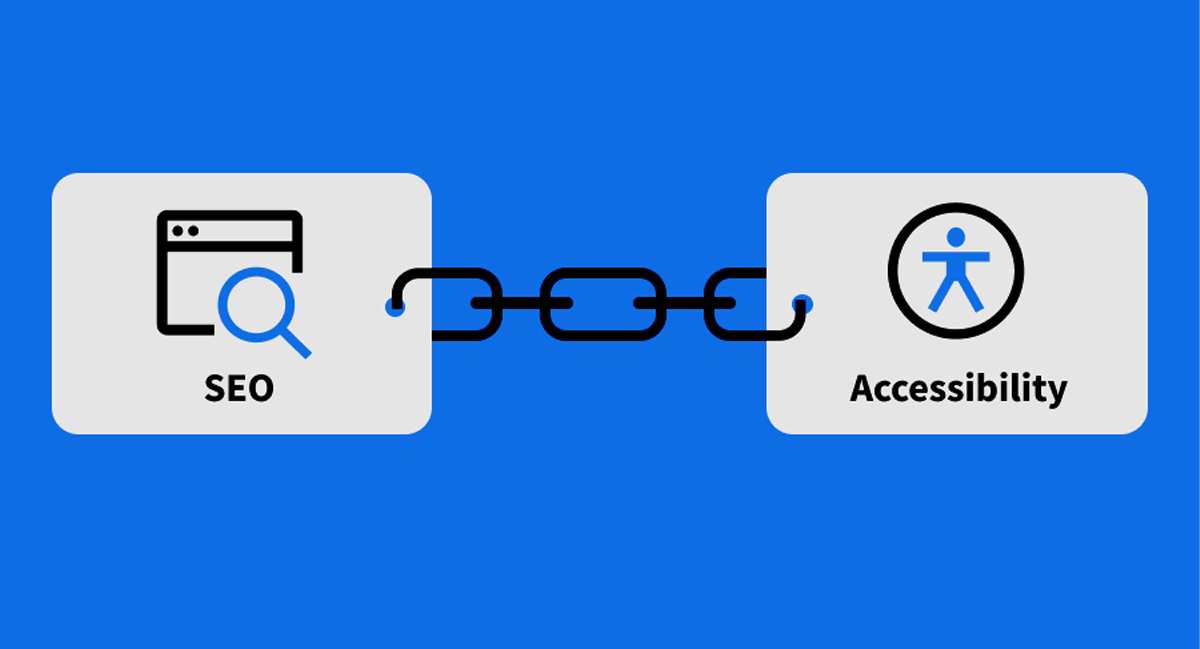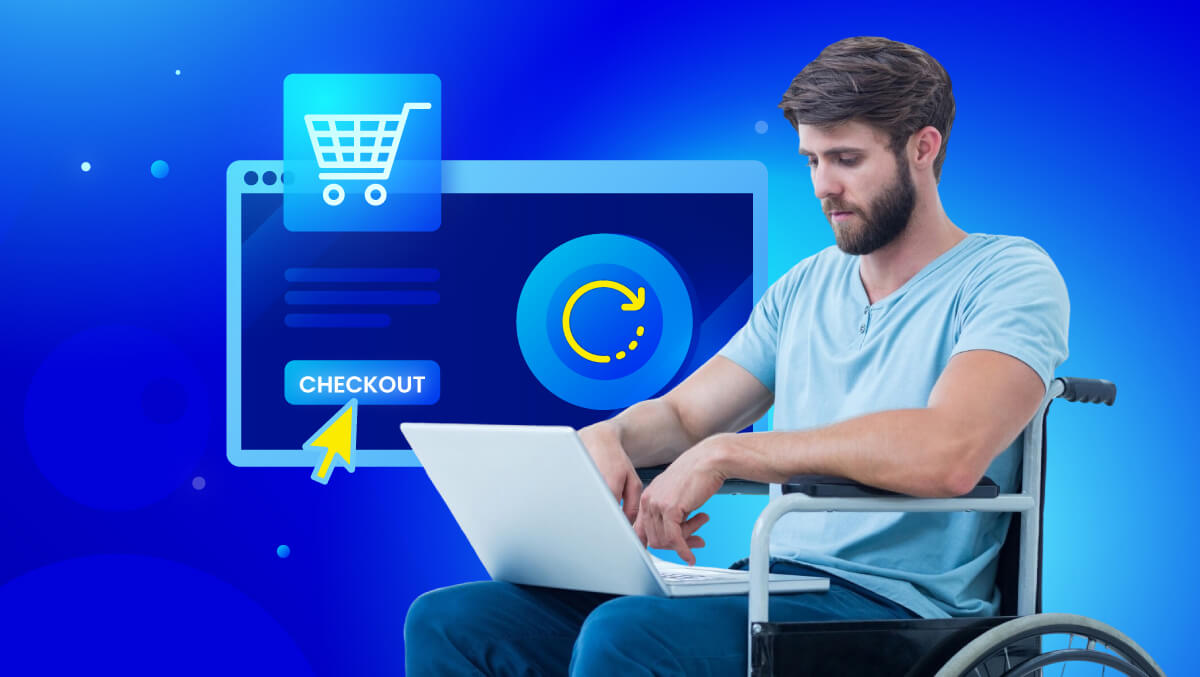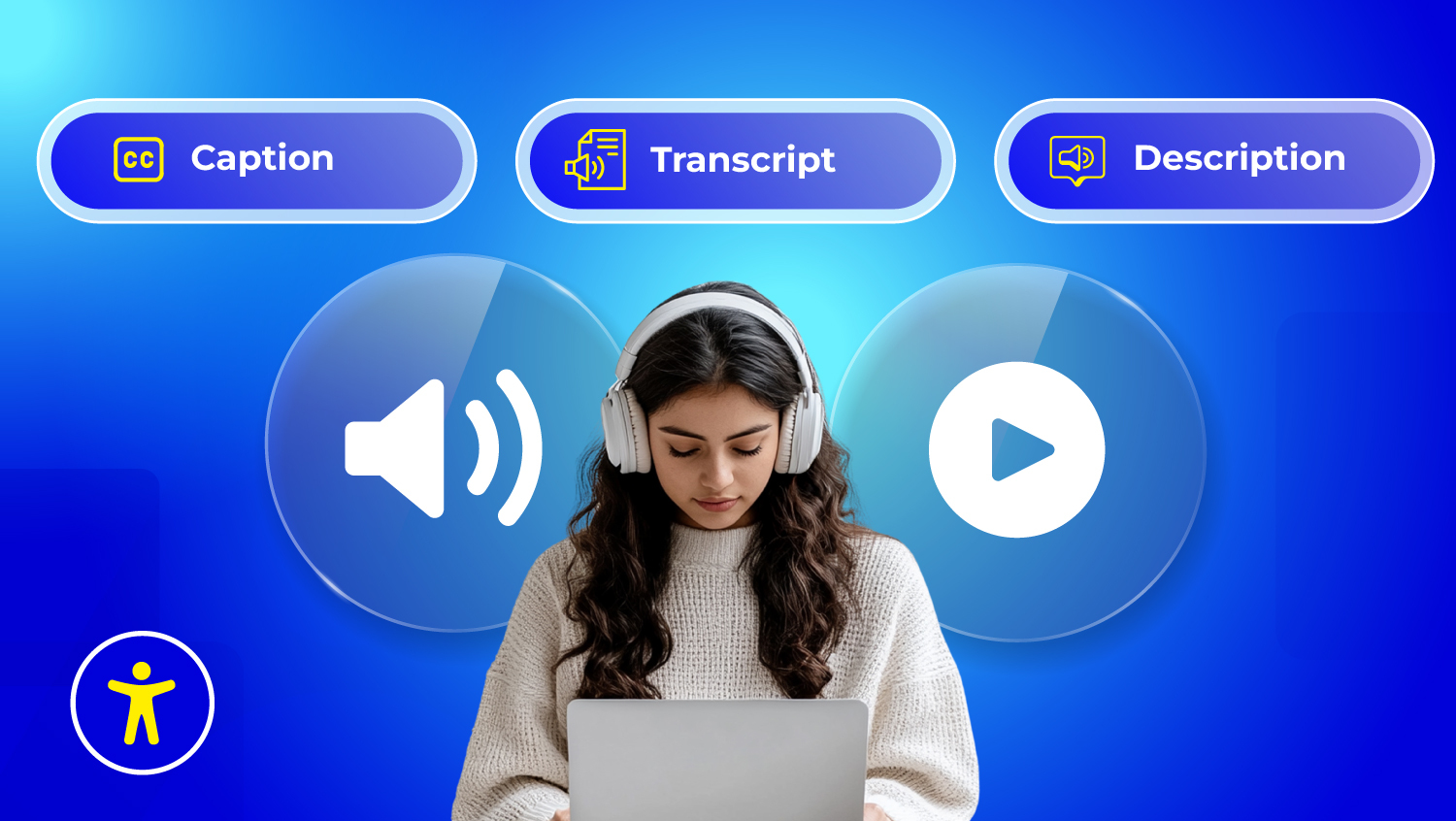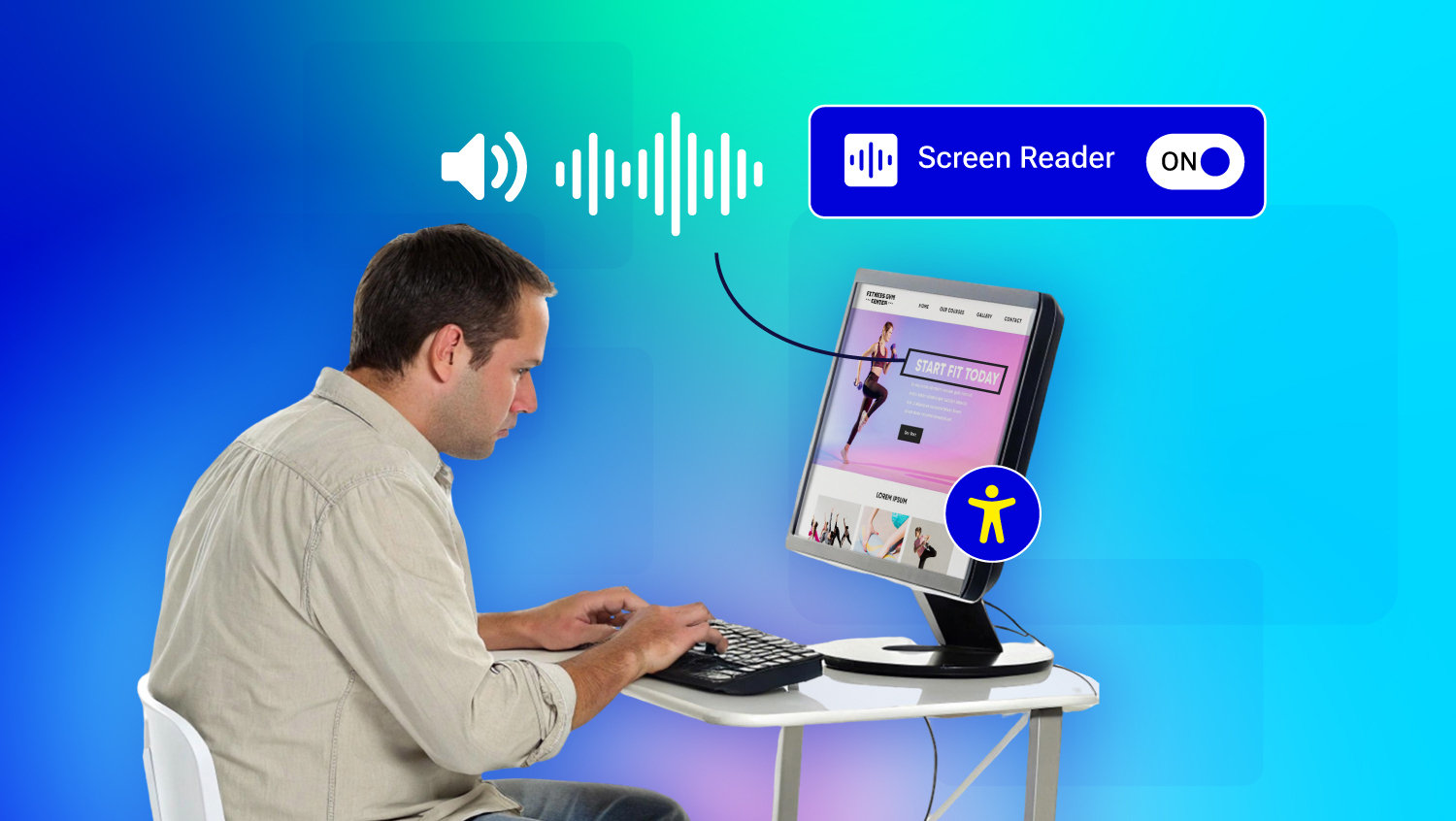SEO Accessibility: Inclusive Design Boosts Rankings and Reach

When you think SEO, you probably think: keywords, backlinks, meta tags.
But here’s what most marketers miss, accessibility is quietly becoming a major search ranking factor.
SEO accessibility is where inclusivity meets performance. By making your website usable for everyone, including people with visual, auditory, cognitive, or motor disabilities, you’re not just doing the right thing. You’re also sending all the right signals to Google.
From clean HTML structures and alt text to keyboard navigation and proper heading hierarchies, accessible websites are easier for both humans and search bots to navigate.
In this guide, you'll uncover:
- What SEO accessibility actually means (and why it matters now)
- How inclusive design boosts your rankings and conversions
- The shared DNA of good accessibility and good SEO
- Step-by-step actions you can start today
- Tools and examples that prove it works
Ready to future-proof your site? Let’s dive into the untapped synergy of accessibility and SEO.
What Is SEO Accessibility?
SEO accessibility is the practice of designing and optimizing your website so that both search engines and people with disabilities can fully access and understand your content. It’s where technical SEO meets inclusive design.
By ensuring your site is readable by screen readers, keyboard-navigable, and logically structured, you’re not just supporting users with visual, cognitive, or motor impairments, you’re also giving Google’s crawlers the clear signals they need to rank your content.
This dual-purpose approach boosts:
- Crawlability: Clean HTML, proper headings, and ARIA roles help search engines understand your site structure.
- User experience: Accessible content improves engagement, time on page, and bounce rates.
- Legal safety: Meets ADA, WCAG 2.2, and EN 301 549 standards, avoiding lawsuits in regions like the US, Germany, and Canada.
Is Accessibility a Google-Approved SEO Booster?
Short answer: Technically, no, accessibility isn’t a direct Google ranking factor.
But in practice? It acts like one.
While Google hasn’t explicitly confirmed accessibility as a ranking signal, its core ranking systems heavily favor websites that are structured for usability, clarity, and performance, all of which accessibility improves.
Here’s how accessibility indirectly boosts SEO:
- Alt Text on Images: Originally meant for screen readers, alt text is also critical for Google Image Search. Optimized alt attributes help images rank and drive traffic.
- Semantic HTML: Using elements like <header>, <main>, <nav>, <h1> to <h6> helps screen readers understand content structure, and also helps Google bots crawl more efficiently.
- Transcripts and Captions: Not only helpful for users with hearing impairments, but also indexable by Google, improving keyword discoverability in video content.
- Clear Link Text: Instead of vague “click here” links, using descriptive anchor text boosts clarity for both humans and crawlers.
- Mobile + Keyboard Navigation: Accessibility ensures mobile and keyboard-only users can navigate easily, a direct ranking factor under Google’s mobile-first indexing.
Google’s official stance: While not an official ranking factor, their Search Central docs emphasize “helpful, reliable, people-first content.” That includes everyone, not just able-bodied users.
Bottom line: Accessibility is not just an ethical or legal checkbox, it’s a secret weapon for long-term SEO resilience.
Does Accessibility Actually Improve SEO Performance?
Absolutely, and not just in theory.
Even though accessibility isn’t a direct ranking factor, optimizing your site for accessibility improves every major SEO performance signal, especially user experience and crawlability.
Here’s how it works:
1. Improves Dwell Time and Reduces Bounce Rate
- An accessible site is easier to use for everyone, including users with low vision, motor challenges, or cognitive differences.
- That means users stay longer, bounce less, and interact more, and those are positive user signals for Google.
2. Boosts Content Indexing
- Accessible content is structured with semantic tags, heading hierarchies, alt text, and clean code, making it easier for Googlebots to crawl and understand.
- Transcripts of videos and descriptive media improve long-tail keyword coverage and voice search visibility.
3. Expands Reach to Untapped Audiences
- Over 1.3 billion people globally live with a disability (WHO). That’s a massive potential market.
- Accessibility also improves experience for people in low-bandwidth areas, mobile-first users, and aging populations.
4. Improves Core Web Vitals and Mobile Experience
- Features like better color contrast, skip links, focus indicators, and keyboard navigation all align with UX-focused SEO signals.
Supporting Data:
- W3C and WebAIM studies found that most top websites fail accessibility checks, giving you a chance to rank better with fewer resources.
- Sites that adopted accessibility improvements reported up to 30% lift in traffic and increased time on site.
Pro tip: Accessibility isn't just about WCAG or legal compliance, it’s Google-friendly UX. That’s the real long-term SEO strategy.
Why SEO Accessibility Matters More Than Ever
1. Supercharges Your Search Rankings
Google’s algorithm now heavily favors user-centric websites. Accessible elements like semantic HTML, proper heading structure, and alt text don’t just help users with disabilities, they also help search engines better index your site. A well-structured, accessible site = better visibility in SERPs.
Source: Google Search Central SEO Starter Guide
2. Unlocks a Billion+ User Market
According to the World Health Organization, over 1.3 billion people globally live with some form of disability. By designing for inclusivity, you make your content available to a wider, often underserved audience, turning accessibility into a growth channel.
Source: WHO Global Report on Disability
3. Improves UX for Everyone
Captions help people watching videos in silent mode. Keyboard navigation helps power users fly through pages. Good contrast and logical layouts assist mobile users. Accessibility = universal usability. When done right, accessible design makes the experience smoother for all users, not just a few.
4. Protects You Legally
Non-compliance with accessibility laws can lead to lawsuits, fines, and reputational damage. In the U.S., websites must meet ADA standards. In the EU, it's EN 301 549 and WCAG 2.2. In Canada, it’s the Accessible Canada Act. Accessibility isn't just ethical, it’s legally required.
Source: W3C WCAG Overview
Where SEO and Accessibility Overlap: A Win-Win Strategy
| Element | SEO Advantage | Accessibility Benefit |
| Alt Text for Images | Enables search engines to index images for Google Image Search and improve relevance | Describes visual content to screen reader users, ensuring blind or low-vision users don’t miss key info |
| Semantic HTML Elements | Enhances crawlability, helps bots understand page layout and content relationships | Provides clear structure to assistive technologies like screen readers |
| Heading Tags (H1–H6) | Helps Google identify main topics, boosts content hierarchy and keyword targeting | Guides screen reader navigation and improves content scannability for all users |
| Descriptive Anchor Text | Increases click-through rates and provides context to search engines | Replaces vague terms like “click here” with meaningful labels that assist all users |
| Video Captions and Transcripts | Improves keyword coverage, dwell time, and engagement metrics | Makes video/audio content accessible to users who are deaf, hard of hearing, or multilingual |
| Page Speed Optimization | Directly impacts rankings via Core Web Vitals | Benefits users with slow connections and ensures faster loading for screen reader tech |
Stuck at taking the first step towards accessibility? Take a tour of our Ultimate Guide to Accessible Design for a head start.
Design for All, Rank for All: Accessibility is the New SEO Hack
SEO (Search Engine Optimization) principles refer to techniques and best practices used to improve a website’s visibility on search engines like Google. The goal is to help your site rank higher in search results and attract more organic traffic. Core SEO principles include:
- Using keywords strategically in content, headings, meta tags
- Optimizing site speed and mobile responsiveness
- Creating quality content that matches user intent
- Structuring content semantically with proper HTML (e.g., H1-H6, lists)
- Improving internal linking and site architecture
- Using alt text for images and transcripts for videos (which overlaps with accessibility!)
ADA (Americans with Disabilities Act) principles are legal and ethical guidelines that require websites and digital content to be accessible to people with disabilities. This includes:
- Providing text alternatives for images and media
- Ensuring keyboard-only navigation
- Using proper color contrast for readability
- Structuring documents and pages so assistive technologies (like screen readers) can interpret them
- Meeting Web Content Accessibility Guidelines (WCAG 2.1/2.2) standards
Why They Go Hand-in-Hand
Many ADA principles (like semantic structure, alt text, captions, etc.) also boost SEO. Making your site more accessible helps both humans and search engines navigate your content, and that’s the future of digital strategy.
Want to learn more about the compliances around the world? Check out our Compliance Hub to get an in-depth knowledge.
How to Make Your Website SEO-Accessible (Step-by-Step Guide)
Accessibility isn’t just for compliance, it’s a ranking signal and user experience win. Here’s how to design a website that search engines and everyone can use:
1. Use Semantic HTML Tags for Structure
Replace generic <div> and <span> tags with meaningful elements like:
- <header>, <nav>, <main>, <article>, <section>, <footer>
- These help both screen readers and Googlebot understand your page layout.
SEO Boost: Clear hierarchy and semantics improve crawlability and featured snippet eligibility.
2. Write Descriptive Alt Text for All Images
Every image must have an alt attribute that describes the image’s purpose, not just its appearance.
- Avoid vague text like “image123” or “logo.”
- Example: alt="Accessible PDF icon showing screen reader compatibility"
Accessibility + SEO = Better context, image search visibility, and UX for blind users.
3. Use Proper Headings and ARIA Landmarks
Use one <h1> per page, followed by logically structured <h2>, <h3>, etc.
- Break content into sections with ARIA landmarks (e.g., role="main", role="navigation") for assistive tech navigation.
SEO impact: Helps Google parse your content correctly, boosting topic relevance.
4. Ensure Full Keyboard Accessibility
Users must be able to navigate your entire site without a mouse.
- Test tab order (Tab, Shift+Tab) for menus, forms, sliders, modals, etc.
- Avoid using onClick handlers without keyboard alternatives.
Pro Tip: Use the WAVE tool to audit keyboard behavior.
5. Provide Transcripts and Captions
All video content should include:
- Closed captions (for users who are deaf or in silent environments)
- Text transcripts (for audio content like podcasts)
SEO Bonus: Transcripts improve keyword density and dwell time.
6. Optimize Color Contrast and Visual Clarity
Maintain a minimum contrast ratio of 4.5:1 between foreground and background text (per WCAG 2.1 AA).
- Avoid using color alone to convey meaning.
- Test with tools like Contrast Checker.
Result: Better readability for users with low vision + fewer bounce rates.
7. Design Accessible Forms
Label every form input with for and id attributes.
- Add ARIA roles where necessary (aria-describedby, aria-required)
- Ensure errors are highlighted and described in plain language.
Better forms = Better conversions + Lower user frustration + Compliance
Don’t know where to start? Try using Accesstive’s Free Audit for a quick scan.
Real-World Example: How Accessibility Boosted SEO
A mid-sized eCommerce brand overhauled its website using SEO accessibility practices:
- Added descriptive alt text to all product images
- Rebuilt product pages with semantic HTML and proper heading hierarchy
- Made all forms keyboard-navigable with visible labels and logical tab order
Results:
- Achieved a 27% increase in organic traffic within 3 months
- Reported an 18% drop in bounce rate after implementing accessible navigation and color contrast fixes
- Received positive feedback from screen reader users, especially after adding ARIA labels and alt text
Top 5 Tools to Audit SEO and Accessibility (With Best Practices)
Ensuring your website is both SEO-friendly and accessible requires the right tools. Below are the best auditing tools, their primary uses, and key optimization tips.
1. axe DevTools
Primary Use: WCAG compliance testing and accessibility issue detection.
Best For: Developers fixing accessibility errors.
Key Checks:
- Missing ARIA labels
- Color contrast issues
- Keyboard navigation problems
Optimization Tip:
- Run automated scans and manually verify flagged errors.
2. Lighthouse (Chrome DevTools)
Primary Use: Automated audits for accessibility, SEO, performance.
Best For: Quick, actionable reports.
Key Checks:
- Mobile-friendliness
- Alt text for images
- Proper heading structure
Optimization Tip:
- Aim for a 90+ score in Accessibility and SEO categories.
3. WAVE Accessibility Tool
Primary Use: Visual accessibility feedback.
Best For: Content teams checking live pages.
Key Checks:
- Broken ARIA references
- Missing form labels
- Redundant links
Optimization Tip:
- Fix "errors" first, then review "alerts."
4. Screaming Frog SEO Spider
Primary Use: Crawl site structure for SEO and accessibility issues.
Best For: Large-scale technical audits.
Key Checks:
- Missing alt attributes
- Broken links
- Duplicate meta tags
Optimization Tip:
- Export image alt text reports to fix missing descriptions.
5. Sitebulb
Primary Use: Deep technical SEO + accessibility audits.
Best For: Agencies and advanced SEOs.
Key Checks:
- Heading hierarchy
- Readability scores
- JavaScript accessibility issues
Optimization Tip:
- Use "Accessibility" reports to prioritize fixes.
6. Accesstive’s Access AI Audit
Primary Use: AI-powered automated accessibility scanning.
Best For: Quick compliance checks (WCAG 2.1, ADA).
Key Checks:
- Screen reader compatibility
- Keyboard navigation
- Color contrast issues
Try Access AI Audit
Optimization Tip:
- Use the detailed PDF report to track fixes.
7. Accesstive’s Access Monitor
Primary Use: Continuous compliance monitoring.
Best For: Businesses needing ongoing accessibility tracking.
Key Checks:
- Real-time issue detection
- Compliance score tracking
- Automated re-scans
Learn more about Access Monitor
Optimization Tip:
- Set up weekly automated scans to stay compliant.
Bonus: Quick Accessibility and SEO Checklist
- Images: All have descriptive alt text.
- Headings: Proper hierarchy (H1 > H2 > H3).
- Links: Anchor text is meaningful (no "click here").
- Keyboard Navigation: Test with Tab key.
- Mobile: Responsive design, fast load times.
Conclusion
Digital inclusion isn’t a passing trend, it’s the future of smart, sustainable SEO. When you build your website with accessibility in mind, you do more than improve rankings. You create a digital space that is open to everyone.
Writing good alt text and ensuring keyboard navigation are important. Every accessibility fix helps both user experience and search engine performance. As Google focuses on usability in its ranking, SEO and accessibility are now one goal.
So instead of optimizing just for bots, optimize for humans and machines alike. That’s where real visibility, real impact, and real brand value begin.
FAQs: SEO Accessibility
Indirectly, yes. Google values usability and fast, structured content. Many accessible practices improve SEO signals like bounce rate, time on site, and mobile usability.
Absolutely. Alt text helps Google index images and screen readers describe content to users with visual impairments.
Use tools like Lighthouse, WAVE, and axe DevTools, then follow up with manual keyboard and screen reader testing.
No. Accessibility benefits everyone, including mobile users, aging populations, and people using voice search or low-bandwidth connections.
Aim for WCAG 2.1 Level AA, it's the most common legal and practical standard for digital accessibility.
Accessibility improves user experience, which search engines prioritize. Many SEO best practices (like alt text and semantic HTML) also enhance accessibility.
Google uses accessibility factors (like mobile-friendliness and readable content) in ranking algorithms. More accessible sites often rank higher.
Yes! Tools like Lighthouse check both accessibility and SEO issues. Fixing accessibility errors often resolves SEO problems too.
The 5 A’s of Accessibility are:
- Perceivable (text alternatives, captions)
- Operable (keyboard navigation)
- Understandable (clear content)
- Robust (works with assistive tech)
- Testable (measurable with audits)




